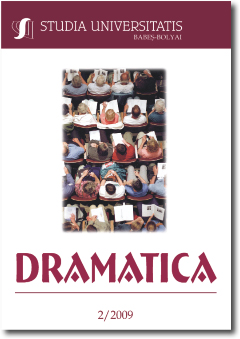MODELLING COMMUNICATION IN THE DIGITAL ERA
MODELLING COMMUNICATION IN THE DIGITAL ERA
Author(s): Mihai PedestruSubject(s): Theatre, Dance, Performing Arts
Published by: Studia Universitatis Babes-Bolyai
Keywords: Communication; Spectatorship; New Media; Non-linearity.
Summary/Abstract: We assume the enunciation is the basic element of communication. If, with respect to the verbal discourse, we are able to impose, in order to facilitate interpretation, an analogy between enunciation and sentence, with respect to the media discourse such an approach is not only impossible; it is also useless. An important mutation generated by the modern media and the New Media in the field of communication interpretation is the change of perspective with reference to the moment when meaning is produced. In 1988, speaking about television, but the asserts stays valid for Media 2.0, too, the American theoriser John Fiske (1988) observed that “Text as meaning is produced at the moment of reading, and not at the moment of writing, and it tales away from that text the status of being the originator of that meaning.” (p. 305). In the previous sections, we were examining the fact that, in the Web 2.0 media products, communication is built on a multilayer discourse, only apparently unidirectional. We think that, because of the production of meaning at the moment of reading and because of the fact that the reading of the Web 2.0 media product engages the reception, if not simultaneous, at least successive of the previous feed-back, this type of discourse is in a permanent fractal, unforeseeable and only tangentially controllable mutation. The constituent enunciations, whether textual or contextual, visual, audio, linguistic or any other form allowed by the medium, are reorganised and restructured incessantly, irrespective of the initial author of the text. We will attempt to synthesise below the most interesting communication models theorised until recently and examine to what extent they manage to define digital communication on Web 2.0 platforms.
Journal: Studia Universitatis Babes-Bolyai - Dramatica
- Issue Year: 2009
- Issue No: 2
- Page Range: 27-42
- Page Count: 16
- Language: English

